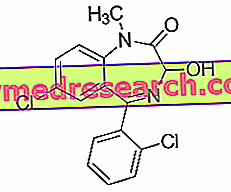
What is Lumigan?
Lumigan is a clear eye drop solution containing the active ingredient bimatoprost.
What is Lumigan used for?
Lumigan is indicated to reduce the pressure inside the eye. It is used in patients with chronic open-angle glaucoma (a disease in which eye pressure increases because the liquid cannot flow out of the eye) and in patients with ocular hypertension (eye pressure above normal). Lumigan can be used alone (as a single agent) or as an add-on to beta-blocker eye drops (other medicines used to treat these conditions).
The medicine can only be obtained with a prescription.
How is Lumigan used?
The recommended dose is one drop of Lumigan in the affected eye (s) once a day, to be given in the evening. If more eye drops are being used, each drug should be administered at least 5 minutes apart.
How does Lumigan work?
When the pressure inside the eye increases, it causes damage to the retina (the light-sensitive membrane located at the back of the eye) and to the optic nerve (nerve that sends signals from the eye to the brain), causing severe vision loss. and even blindness. The active substance in Lumigan, bimatoprost, is an analogue of prostaglandins (an artificial copy of a natural substance, prostaglandin). In the eye the prostaglandin increases the drainage of aqueous humor (transparent liquid present inside the eye) towards the outside. Lumigan acts in the same way, increasing the flow of liquid towards the outside of the eye, thus reducing the pressure inside the eye and the risk of damage.
How has Lumigan been studied?
Lumigan has been studied in adults with glaucoma or ocular hypertension:
- Lumigan used on its own was compared with timolol (a beta-blocker used to treat glaucoma) in two 12-month studies involving a total of 1, 198 patients. Some of these patients continued to take the drugs for 2 or 3 years (379 and 183 respectively). Lumigan was also compared to latanoprost (another prostaglandin analogue used in the treatment of glaucoma) in a 6-month study conducted on 269 patients;
• the efficacy of Lumigan used as adjunctive therapy to beta-blocker eye drops was compared with the efficacy of placebo (a dummy treatment) in combination with beta-blockers in a study involving 285 patients. The efficacy of Lumigan as adjuvant therapy for beta-blockers was also compared with that of latanoprost in another study involving 437 patients.
In all these studies the main measure of effectiveness was the reduction of eye pressure. Ocular pressure is measured in "millimeters of mercury" (mmHg). In a patient with ocular hypertension or glaucoma, this value is generally higher than 21 mmHg.
What benefit has Lumigan shown during the studies?
Lumigan given as monotherapy was more effective than timolol in reducing eye pressure. This effect was maintained even after 2 or 3 years of treatment, with an average reduction in ocular pressure ranging from 7.1 to 8.6 mmHg observed with the administration of Lumigan once a day compared to the average reduction of 4.6 until at 6.4 mmHg found with timolol. Lumigan was also more effective than latanoprost: after six months of treatment, a reduction in eye pressure of 6.0 to 8.2 mmHg was observed in subjects treated with Lumigan, compared to a reduction of 4.9 up to 7.2 mmHg detected with latanoprost.
The addition of Lumigan to ongoing beta-blocker therapy was more effective than beta-blocker monotherapy. After three months of treatment with Lumigan as adjunctive therapy, the eye pressure decreased by 7.4 mmHg, compared to the decrease of 3.6 mmHg observed in the group that added a placebo. Lumigan was as effective as latanoprost when used as an adjunctive therapy to beta-blockers, with reductions in eye pressure of 8.0 and 7.4 mmHg, respectively, after three months of treatment.
What is the risk associated with Lumigan?
The most common side effects seen with the use of Lumigan (seen in more than 1 patient in 10) are conjunctival hyperaemia (increased blood supply to the eye, which causes redness of the eye), growth of the eyelashes and ocular itching. For the full list of all side effects reported with Lumigan, see the Package Leaflet.
Lumigan should not be used in people who may be hypersensitive (allergic) to bimatoprost or any of the ingredients. Lumigan contains benzalkonium chloride, which can make soft contact lenses opaque; therefore, people who wear soft contact lenses should pay particular attention.
Why has Lumigan been approved?
The Committee for Medicinal Products for Human Use (CHMP) decided that Lumigan's benefits are greater than its risks in reducing elevated intraocular pressure in chronic open-angle glaucoma and ocular hypertension in adults (as a monotherapy or as an add-on therapy to beta-blockers) and therefore recommended that Lumigan be given marketing authorization.
More information on Lumigan:
On 8 March 2002, the European Commission granted a marketing authorization valid throughout the European Union for Lumigan to Allergan Pharmaceuticals Ireland. The marketing authorization was renewed on 8 March 2007.
The full EPPAR for Lumigan can be found here.
Last update of this summary: 09-2009.



